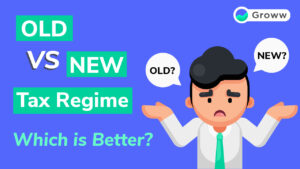 In case any employee has failed to specify their choice of the tax regime, can the concessional/ new tax regime would be applicable as a default tax regime?
In case any employee has failed to specify their choice of the tax regime, can the concessional/ new tax regime would be applicable as a default tax regime?
Question: Salaried taxpayers are generally required to inform their employers about their choice of tax regime at the beginning of a financial year. In case any employee has failed to specify their choice of the tax regime, can the concessional/ new tax regime would be applicable as a default tax regime? Kindly guide us on the tax considerations under the new tax regime and criteria for switching between the tax regimes, if available?
Answer given by Dr. Suresh Surana, Founder, RSM India: Taxpayers are required to inform their employers about their choice of the tax regime at the beginning of the financial year in order to enable the employers to determine their tax liabilities and appropriate TDS deductions for the year. In case the taxpayer fails to specify their choice of the tax regime to the employer, they would be subjected to withholding (TDS deductions) in accordance with the default tax regime i.e. concessional/ new regime.
The tax considerations under the concessional/new tax regime include the following:
The old tax regime offers an exemption limit of Rs 2,50,000 with the highest tax slab rate of 30% applicable on income above Rs 10,00,000. Contrary to the 4 tax slab rates of the old tax regime, the new tax regime is wider in scope with its 6 tax slab with rates ranging from 5% to 30% with exemption limit up to Rs 3,00,000 and the highest tax rate of 30% is applicable on income above Rs 15,00,000. The tax rates under both such regimes are provided as follows:

Under the old tax regime, resident individuals with total income up to Rs 5,00,000 would be subjected to a Nil effective tax rate by way of claiming full rebate u/s 87A of the I-T Act. However, individuals opting for the new tax regime can claim full tax rebate u/s 87A of the I-T Act for total income up to Rs 7,00,000.
Salaried individual taxpayers with total income up to Rs 7,50,000 may opt for the new tax regime u/s 115BAC of the I-T Act and claim the benefit of standard deduction u/s 16(ia) of the I-T Act up to Rs 50,000. In such case, the effective tax rate would be nil on account of claiming of rebate u/s 87A of the I-T Act.
The highest tax surcharge rate has been reduced from 37% to 25% under the new tax regime for total income exceeding Rs 5 crore, thus reducing the effective tax rate from 42.744% to 39%.
There are no restrictions on claiming the benefit of tax deductions and exemptions under the old tax regime. For instance, a taxpayer with investments in tax-saving instruments, who pays premiums on life or a medical insurance policy, children’s school fee, home loan principal repayment, etc., can avail the benefit of the deduction for house rent allowance, leave travel allowance etc. in the old tax regime. However, the new tax regime permits only certain specified deductions such as standard deduction on salary of Rs 50,000 u/s 16(ia), deduction for family pension being lower of Rs 15,000 or 1/3rd of the pension, deduction pertaining to employer’s contribution to National Pension Scheme u/s 80CCD(2) of the I-T Act, etc.
The Finance Act 2023 has made the new tax regime as default tax regime. However, individual taxpayers can switch between the old and new tax regime on a year-on-year basis whereas those individual taxpayers deriving any income from business or profession, who has exercised the option of opting out of the new tax regime u/s 115BAC, could exercise the option of opting back to the said new tax regime only once.
It is pertinent to note that though salaried individuals can switch between the old and new tax regime on a year-on-year basis, such salaried employees are required to provide intimation regarding their choice of tax regime to employers in the beginning of the financial year. Failure of the same will result in deduction of TDS u/s 192 of the I-T Act, according to the default tax regime i.e. new tax regime u/s 115BAC of the I-T Act. Nevertheless, the final choice of the tax regime can be made by the employee at the time of furnishing of tax return u/s 139(1) of the I-T Act.
Source: https://www.financialexpress.com/money/income-tax-new-vs-old-tax-regime-how-is-one-taxed-under-the-new-regime-and-how-to-make-a-switch-between-the-two-regimes-3469113/
© 2018 CA Chandan Agarwal. All rights reserved.